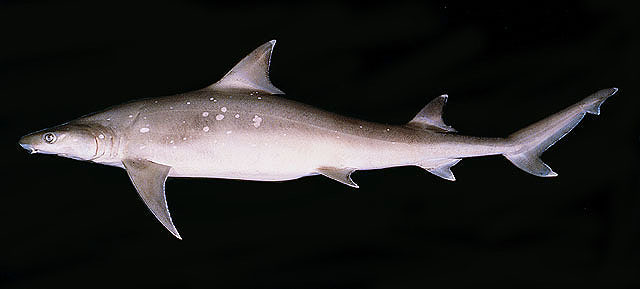| Hemigaleidae (Weasel sharks) |
| 114 cm TL (male/unsexed) |
|
demersal; marine |
| Indo-West Pacific: southern India and Sri Lanka; China to Indonesia (Ref. 56150). Also from Red Sea (Ref. 93009).
Specimens found in Australia (and probably Papua New Guinea) belong to a separate species, Hemigaleus australiensis (Ref. 56150). |
|
Dorsal spines (total): 0-0; Dorsal soft rays (total): 0-0; Anal spines: 0-0; Anal soft rays: 0-0. Australian specimens with dark-tipped fins; tooth counts 28-34/43-54; total vertebral counts 111 to 118 (Ref. 13567). Indonesian, Singapore and Thailand specimens with light-tipped fins; tooth counts 25-32/37-43; total vertebral counts 137 to 150 (Ref. 13567). Grey-brown above, lighter below, dorsal fins with white tips and posterior margins, sometimes with spots on sides of body (Ref. 13567). |
| A small, relatively common inshore and offshore shark of tropical continental seas (Ref. 13567). Feeds mainly on cephalopods, particularly octopi (Ref. 13567) but also takes crustaceans and cephalopods (Ref. 244). Viviparous (Ref. 50449). Taken regularly in inshore artisanal fisheries (Ref.244), commonly caught by inshore gillnet, bottom trawl and, to a lesser extent, longline fisheries. Utilized for human consumption (Ref. 244). Offal used for fishmeal (Ref. 244). |
|
Vulnerable (VU); Date assessed: 06 November 2020 (A2d) Ref. (130435)
|
| harmless |
|
Source and more info: www.fishbase.org. For personal, classroom, and other internal use only. Not for publication.

